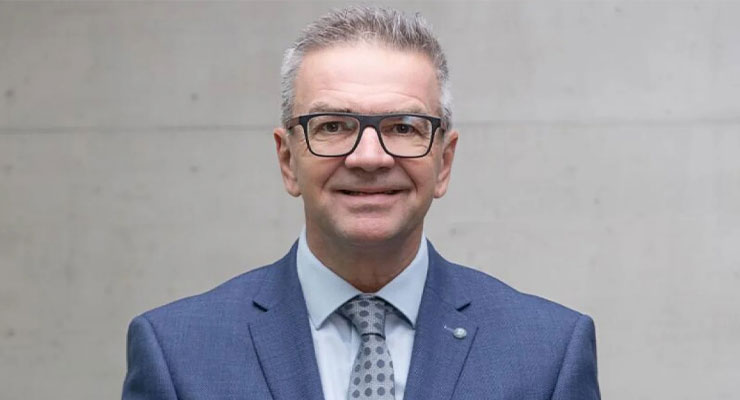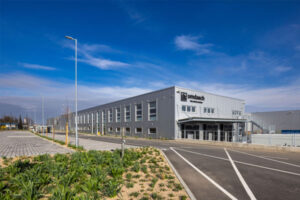ACROSS: YOU HAVE WORKED IN TRAVEL RETAIL FOR OVER 30 YEARS, SINCE 2017, IN THE MIDDLE EAST, WHERE YOU HAVE BEEN PART OF SOME OF THE MOST SIGNIFICANT AND EXCITING PROJECTS IN THIS AREA. FROM YOUR OWN EXPERIENCE: WHERE WILL TRAVEL RETAIL BE IN SUMMER 2024?
MICHAEL RIPFL: I have just returned from the Travel Retail Consumer Forum 2024 in Dubai. We were the only shopfitter present alongside the airports, operators, and brands. The trade fair has already shown with its many participants that travel retail is on an excellent course. The current figures prove this: Passenger figures are sometimes better than in 2019, with only the number of Chinese tourists still lagging behind pre-crisis levels. This naturally has an impact on the premium and luxury business. And this – as everyone in Dubai agreed – will not change fundamentally in 2024.
ACROSS: WHY IS THAT?
RIPFL: The duty-free city of Hainan is becoming increasingly crucial for the Chinese population. Just as Americans want to go to Las Vegas, Chinese citizens wish to have been to Hainan once and shop there. And many return regularly. They make up for the purchases they would otherwise have made while traveling. The industry, therefore, assumes that the revival of Chinese shopping trips will take some time.
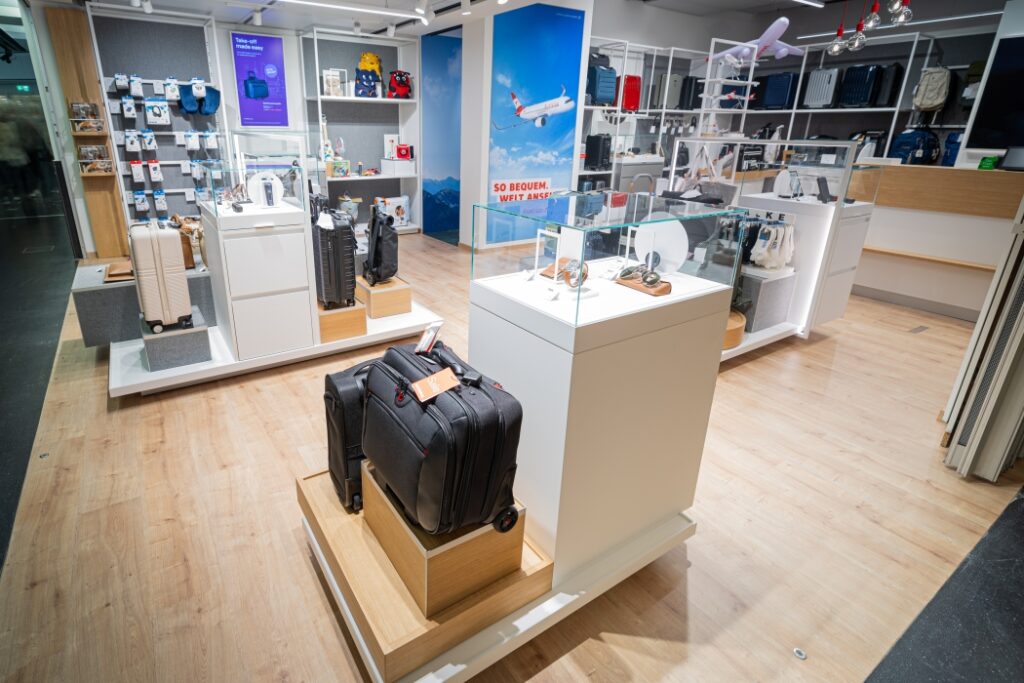
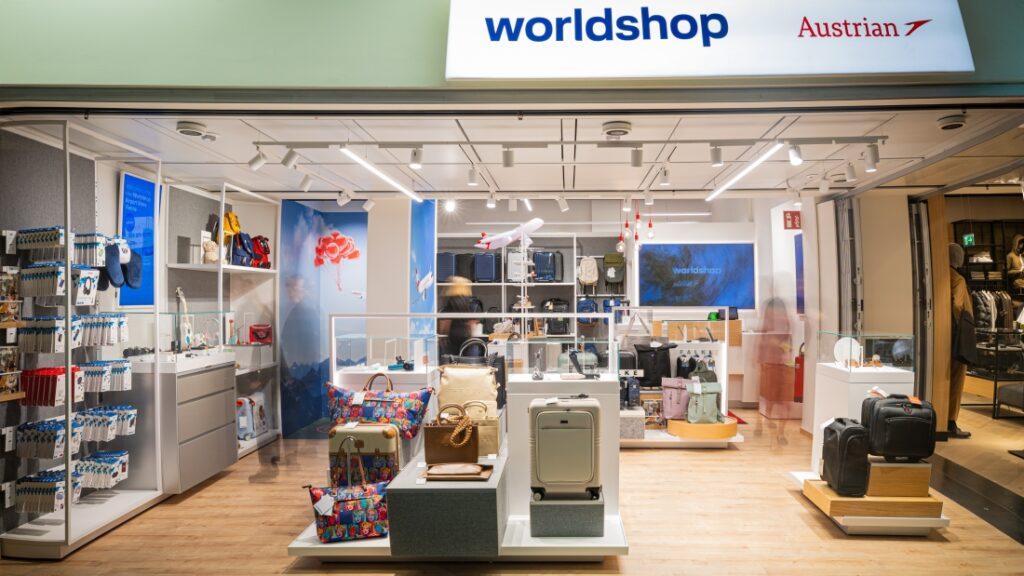
At Vienna Airport umdasch designed and planned the Miles & More Worldshop on 50 sq m. Beside planning and design the company was responsible for value engineering, manufacturing, installation, general contracting, lighting and design engineering. /// credit: AUSTRIAN AIRLINES_DBS
ACROSS: WHAT DISTINGUISHES THE TRAVEL RETAIL DIVISION – ESPECIALLY IN CONTRAST TO OTHER RETAIL CATEGORIES?
RIPFL: First and foremost, this means handling large customer flows in a very short period. The peak period at an international airport can be like a shopping center in the run-up to Christmas – every day. In Europe, there is also the challenge of short dwell times. Here, passengers are generally familiar with the routes and go to their gates quickly. Accordingly, purchasing decisions have to be made promptly. The guests’ primary goal is not to miss their flight. Therefore, the stores must go to great lengths to attract customers. Digitalization is increasingly essential in giving customers a sense of security that they will achieve their primary goal of boarding on time. Retailers would do well to introduce digital systems and boards on which customers can always see the status of their flight and the route to the gate. The latter is an example of close cooperation in the travel retail sector.
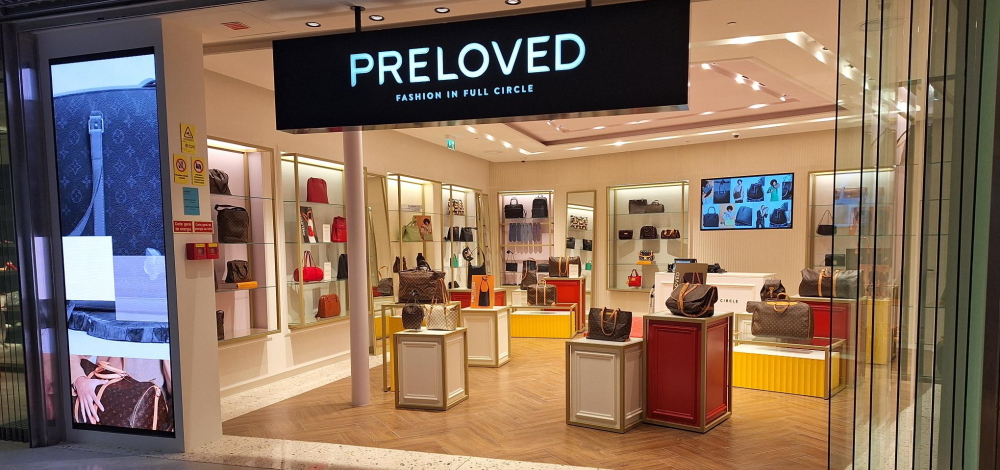
ACROSS: WHO WORKS TOGETHER?
RIPFL: All three – brands, airports, and operators – have a close relationship and want to work together profitably. In the industry, this is known as the “trinity.” The players are interdependent and, therefore, work together. A recent example is Hamad International Airport’s “The Orchard” expansion in Doha. The retail, experience, and F&B areas are planned first, and then the airport is built around them. This is more difficult in Europe due to the lack of available space. However, everyone follows this principle for new builds and conversions. This is currently clearly visible in the southern expansion in Vienna. A clear statement has been made: We want F&B and additional retail space. The international experience is incorporated here for guests. The brands are keen to present their goods and are particularly eager to work on promotions and unique pop-up opportunities. This attracts the attention of guests walking to their planes.
ACROSS: WHAT OTHER SPECIAL FEATURES DOES TRAVEL RETAIL HAVE?
RIPFL: In addition to the already mentioned – large customer flows in a short time, the short dwell time, rapid decision-making, and the need to keep the customer constantly informed – the most significant differences to regular retail are the structural conditions. Safety plays a vital role here. Whether working in stores or on construction sites, every employee undergoes an intensive safety check. In addition, the logistics and fire resistance requirements are inevitably higher than in other shopping areas. Due to airport security, every person and every step in the work process must be checked and certified.
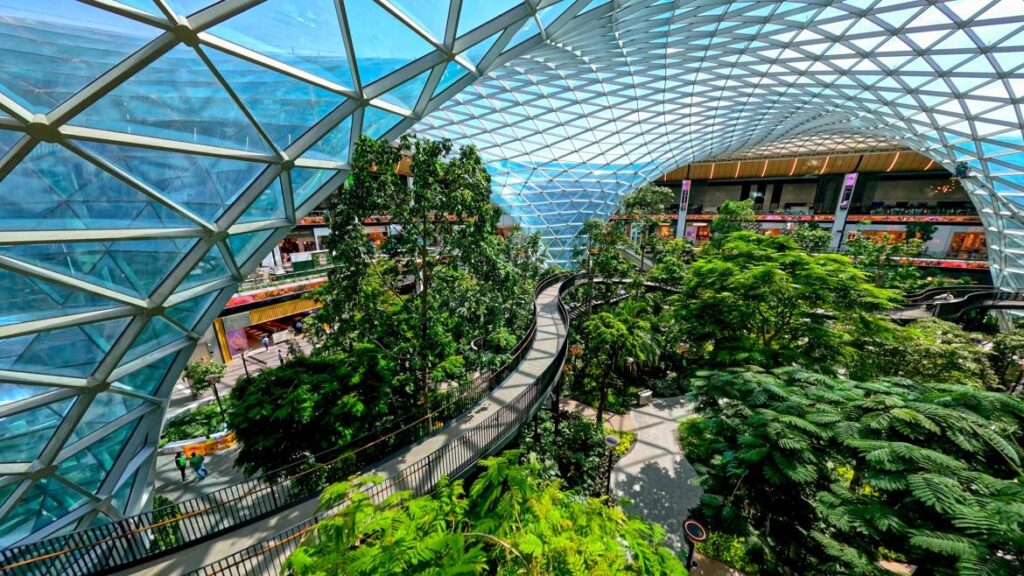
ACROSS: HARDLY ANY OTHER SECTOR HAS BEEN SLOWED DOWN AS MUCH BY THE PANDEMIC AS TRAVEL RETAIL. WHAT DEVELOPMENTS HAVE THERE BEEN, PARTICULARLY AFTER AND AS A RESULT OF COVID?
RIPFL: First and foremost, once travel was possible again, the store design had to ensure that personal contact was reduced and that advice could be provided with less direct contact. This required a great deal of digital communication. In particular, a lot of work was done with QR codes. Contactless payment and its design also became much more relevant. On the demand side, health and wellness products became more relevant during this time.
ACROSS: WHICH CHANGE HAS THE MOST LONG-TERM CONSEQUENCES?
RIPFL: The pandemic has made the “trinity” work even more closely together. However, the most significant change since the pandemic is probably the issue of sustainability. This issue, in particular, can only be tackled together. We see that airports worldwide are making greater efforts to ensure that buildings and processes are carbon neutral. There are also simple but very visible efforts: For example, water dispensers can be found after security to refill private containers. In general, many airports pursue a “no more plastics” strategy. Bags are now only made of paper, plastic bottles are no longer used, and even high-end alcohol bottles are no longer packed in cardboard boxes.
ACROSS: WHAT DOES THAT MEAN FOR YOUR WORK?
RIPFL: Of course, we must respond to this and be in close contact with the operators. We have developed an eco-design. This has resulted in intensive changes to the store fittings, furniture, and materials. The latter are increasingly being made from recycled materials. But of course, it’s also about material procurement. Shorter transportation routes and local production are always preferred. A new retail format recently introduced at airports also moves in this direction: “pre-loved” stores! Here, customers can buy second-hand products, mainly from the luxury segment. This is driven by Generation Z, a customer group with entirely new demands, values, and purchasing behavior, to which we are naturally adapting.
ACROSS: WHAT ARE THE CURRENT TRENDS IN THE DESIGN OF RETAIL AREAS?
RIPFL: In fact, there are constantly new trends here. Fifteen years ago, classic duty-free stores everywhere were transformed into walk-through duty-free. Today, everything moves toward worlds of experience or a sense of place and belonging. Regionality plays a significant role here. The aim is for travelers – whether business travelers or tourists – to remember the location positively through the design and the products on offer. Experiential worlds and digital experiences have found their way into airports on a broad scale. And as already mentioned, wellness is taking on a new role.
ACROSS: WHAT WOULD BE EXAMPLES OF THIS?
RIPFL: Many airports offer spas, wellness treatments, and saunas. A lot has happened in the lounge areas in particular. Sleeping berths and quiet workplaces are also becoming increasingly popular. There are many offers to rent a place to work and relax before a stopover – ranging from a room with a bed and shower to private cigar lounges. The main aim is to ensure that travelers can spend their stay as pleasantly and individually as possible. This prioritization means that airports are increasingly becoming destinations themselves. Airports are not just transit points like train stations but must be marketplaces where guests can linger.
ACROSS: THE LENGTH OF STAY IS DECISIVE HERE.
RIPFL: Of course. In Qatar, they calculate with three-hour layovers. This is not the case in Copenhagen, for example. This results in a different design and a different offer.
ACROSS: WHICH RETAIL SEGMENTS ARE PARTICULARLY IN DEMAND?
RIPFL: Premium or luxury products are increasing even though Chinese tourists are still traveling less. Another area on the rise is products that are exclusive to travelers.
ACROSS: FINALLY, IN YOUR OPINION, ARE THERE ANY LESSONS TO BE LEARNED FROM TRAVEL RETAIL FOR THE SHOPPING CENTER INDUSTRY?
RIPFL: I see two points here. The first is cooperation with the various stakeholders, which cannot be emphasized enough. The second is the immediate euphoria of customers. Travel retail has always had to be fast. However, it is precisely this ability to react quickly that is also becoming increasingly important for traditional retail. Linked to this is the issue of advice. Travel Retail is certainly one step ahead in this respect; the customer receives faster and more intensive support.

Michael Ripfl
For more than 30 years, Michael Ripfl has worked in in-store design and project realization with a global background on projects in Europe, China, Russia, and Africa. In 2017, he moved to the Middle East as General Manager for Global Brand & Travel Retail Projects at umdasch The Store Makers Middle East. In this position, Ripfl has managed all activities in the Kingdom of Saudi Arabia from the company’s office in Riyadh for the past few years. From July 2024, the manager will return to the head office in Amstetten, Austria, focusing primarily on projects in the Scandinavian region.

